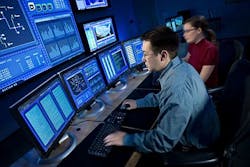Army needs industry help to chart computer technology trends over next three decades
ABERDEEN PROVING GROUND, Md., 15 Feb. 2013. U.S. Army researchers are reaching out to industry for help in a long-term project to chart the most important developments in computer technology over the next three decades.
The Army Contracting Command at Aberdeen Proving Ground, Md., issued a request for information (RFI W15P7T13RA212) this week for the Cyber Technology Trends program to help Army researchers form a long-term cyber science and technology investment strategy spanning the next 30 or more years.
The RFI is on behalf of the Army Communications-Electronic Research, Development and Engineering Center (CERDEC) at Aberdeen Proving Ground, Md., to project what possible computer technologies are likely to be available over the next three decades either as capability enablers or threats to U.S. and allied armed forces.
The RFI seeks information or forecasts on technology trends, concepts, and basic research that may shape how the world will use cyberspace and computer technologies in the next 25 to 35 years.
The request is for planning purposes only, and is not yet a formal solicitation, Army officials say.
Technologies of interest include:
-- wired and wireless communications, protocols, and hardware, including new standards, protocols, and communication mechanisms like 5G systems and millimeter wave technologies;
-- computing hardware and software such as massive multiprocessing chips and natural language programming;
-- Internet application and usage such as Web 3.0; -- human and machine interface like haptics, augmented reality, and brain-machine interfaces;
-- robotics and automation such as autonomous vehicles and the home of the future;
-- artificial intelligence and machine learning, near-intelligent agents, and robots;
-- consumer electronics and personal technologies like virtual reality TV and 3D printing;
-- large-scale data processing and analytics such as next-generation database paradigms; and
-- global cyberspace infrastructures and architectures like cloud computing and next-generation networks.
Those interested should respond by email no later than 10 March 2013 to [email protected]. Put Cyber Technology Trends RFI in the subject line.
For questions or concerns contact the Army's Giorgio Bertoli by email at [email protected].
More information is online at https://www.fbo.gov/notices/049913ad473d795edbda837535e26c38.
